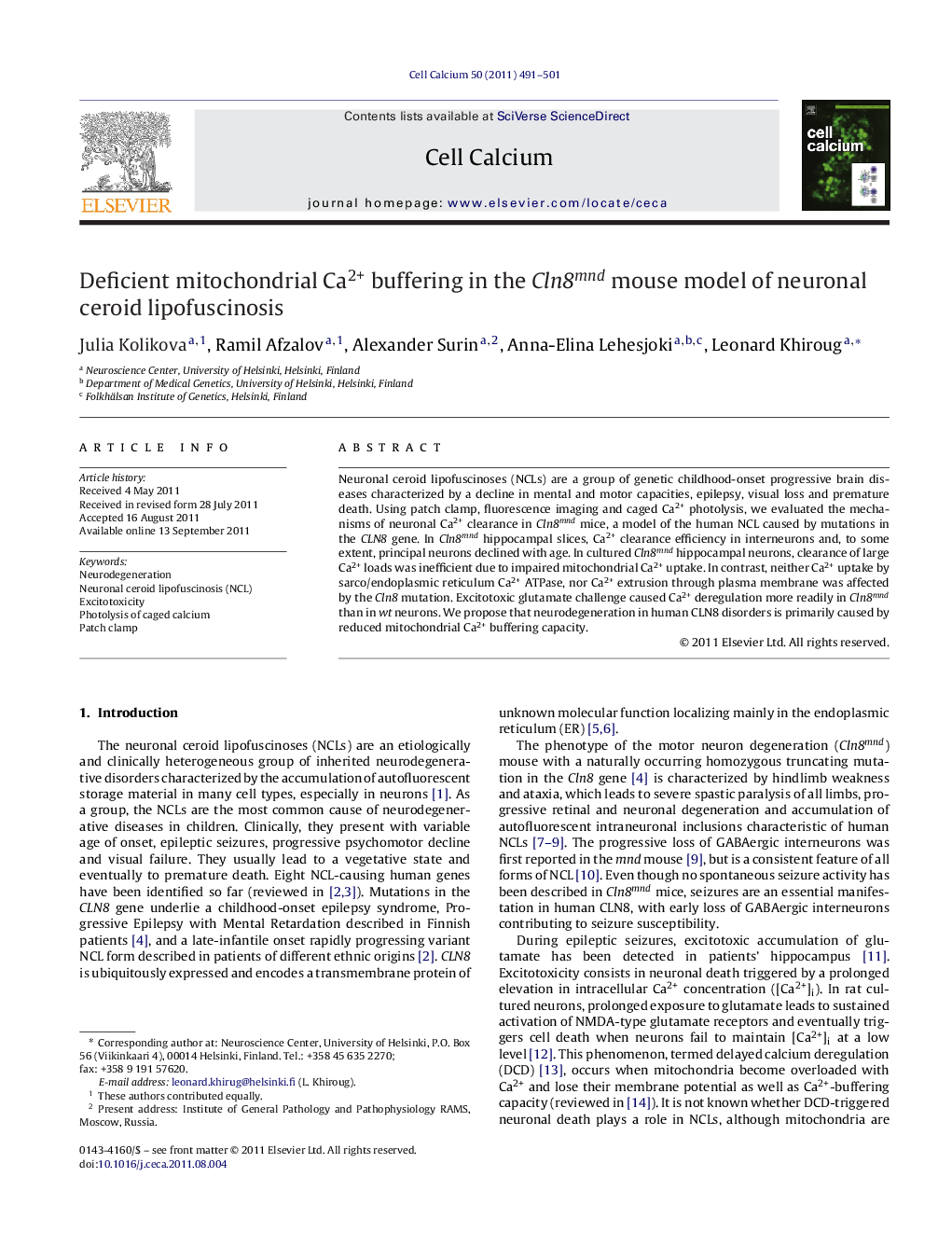| Article ID | Journal | Published Year | Pages | File Type |
|---|---|---|---|---|
| 2166105 | Cell Calcium | 2011 | 11 Pages |
Neuronal ceroid lipofuscinoses (NCLs) are a group of genetic childhood-onset progressive brain diseases characterized by a decline in mental and motor capacities, epilepsy, visual loss and premature death. Using patch clamp, fluorescence imaging and caged Ca2+ photolysis, we evaluated the mechanisms of neuronal Ca2+ clearance in Cln8mnd mice, a model of the human NCL caused by mutations in the CLN8 gene. In Cln8mnd hippocampal slices, Ca2+ clearance efficiency in interneurons and, to some extent, principal neurons declined with age. In cultured Cln8mnd hippocampal neurons, clearance of large Ca2+ loads was inefficient due to impaired mitochondrial Ca2+ uptake. In contrast, neither Ca2+ uptake by sarco/endoplasmic reticulum Ca2+ ATPase, nor Ca2+ extrusion through plasma membrane was affected by the Cln8 mutation. Excitotoxic glutamate challenge caused Ca2+ deregulation more readily in Cln8mnd than in wt neurons. We propose that neurodegeneration in human CLN8 disorders is primarily caused by reduced mitochondrial Ca2+ buffering capacity.
